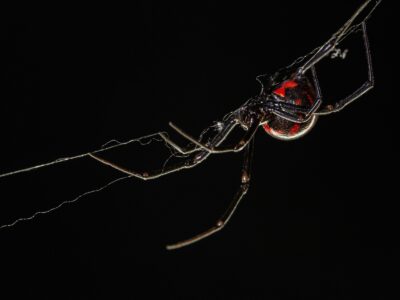Hardhead Catfish
.jumbotron {
background-image: url(“https://a-z-animals.com/media/2021/10/hardhead-catfish-400×300.jpg”);
}
}
@media only screen and (min-width: 641px) and (max-width: 920px) {
.jumbotron {
background-image: url(“https://a-z-animals.com/media/2021/10/hardhead-catfish-470×370.jpg”);
}
}
@media only screen and (min-width: 921px) {
.jumbotron {
background-image: url(“https://a-z-animals.com/media/2021/10/hardhead-catfish.jpg”);
}
}
Hardhead Catfish
Ariopsis felis
The hardhead catfish has a sharp spine near its fin to inject venom
Hardhead Catfish Scientific Classification
- Kingdom
- Animalia
- Phylum
- Chordata
- Class
- Actinopterygii
- Order
- Siluriformes
- Family
- Ariidae
- Genus
- Ariopsis
- Scientific Name
- Ariopsis felis
Read our Complete Guide to Classification of Animals.
Hardhead Catfish Conservation Status
Hardhead Catfish Facts
- Prey
- Algae, sea grasses, sea cucumbers, shrimp, crabs, gastropods, and fish
- Group Behavior
-
- School
- Fun Fact
- The hardhead catfish has a sharp spine near its fin to inject venom
- Biggest Threat
- Habitat changes
- Most Distinctive Feature
- The six long whiskers near the mouth
- Other Name(s)
- Saltwater catfish, sea catfish, and tourist trout
- Gestation Period
- 30 days
- Optimum pH Level
- 8
- Habitat
- Oceans and estuaries
- Diet
- Omnivore
- Type
- ray-finned fish
- Common Name
- Hardhead Catfish
- Number Of Species
- -2
- Group
- school
This post may contain affiliate links to our partners like Chewy, Amazon, and others. Purchasing through these helps us further the A-Z Animals mission to educate about the world’s species..

Spiders that fly! Fish that walk! And 1000+ more incredible animals. Discover them all for FREE
.photo-gallery {
–margin: 0px auto 0px;
–padding: 0px 0px 0px 0px;
}
.gallery-link {
background-image: url(“https://a-z-animals.com/media/2021/10/hardhead-catfish-isolated-1024×535.jpg”);
background-repeat: no-repeat;
background-size: cover;
background-position: center;
height: 500px;
justify-content: center;
text-align: center;
align-items: center;
display: flex;
border: 2px solid #000;
}
.gallery-link img {
height: 50%;
}
@media only screen and (max-width: 768px) {
.gallery-link {
height: 300px !important;
}
}
View all of the Hardhead Catfish images!
“The hardhead catfish can produce sound by grinding its teeth or vibrating the bones located close to the swim bladder.”
Named after the bony plate on the top of the skull, the hardhead catfish is a medium-sized marine predator or omnivore that sifts along the bottom of the ocean, looking for food. It is often mistaken for the Gafftopsail catfish (though the two species aren’t even members of the same genus). They are very common and plentiful throughout the southeastern United States but not that popular among recreational or commercial fishers.
2 Incredible Hardhead Catfish Facts!
- The sharp, serrated spines next to the dorsal (top-most) and pectoral (side) fins can not only pierce the skin and draw blood, but the mucous covering the spine also contains a painful toxin. Since fishers sometimes discard them on the beach, you should be careful about stepping on them, because the spines can puncture shoes.
- It’s been speculated that the hardhead catfish may use echolocation to sense its surrounding environment and avoid obstacles. This is because the species emits a low frequency pulse quite often.
Classification and Scientific Name
The scientific name of the hardhead catfish is Ariopsis felis. The genus of Ariopsis, which contains four living members, may come from the combination of two different Greek words: “ari” means great strength or superior, and “opsis” means appearance. This is a reference to the fish’s strong hard-headed appearance. Felis is simply the Latin name for a cat.
Appearance
The hardhead catfish is characterized by a long body, forked tail, flattened head with hard bony plates, and, of course, six barbels (whiskers) projecting from the mouth and chin that help it sense its surrounding environment. The upper half of the body is a silvery bluish-green or brown color, while the underside is mostly white. These fish are normally 12 to 16 inches long and weigh one to 12 pounds. The largest ever specimen documented was 27 inches long and weighed 12.2 pounds. Females generally have larger pelvic fins than males.

iStock.com/LagunaticPhoto
Distribution, Population, and Habitat
The hardhead catfish can be found near the eastern coast of the United States, within a reasonable distance of the shoreline, sometimes even gathering around the lights of docks. They also travel as far inland as brackish (salty) estuaries and river mouths with sandy bottoms, especially in the spawning season, but they rarely move far enough to reach freshwater. The greatest concentration of catfish appears around the southeastern United States and the Gulf of Mexico.
While population numbers are unknown, it is currently classified as a species of least concern by the IUCN Red List. They are sometimes vulnerable to pollution and large algae blooms, which restrict the amount of oxygen, killing much fish in the area.
Predators and Prey
The hardhead catfish is an omnivore. It sifts along the bottom of the ocean or estuary for food with its whiskers and then picks out whatever morsel it can find. It is not particularly picky about what it eats. These are opportunistic predators.
What eats the hardhead catfish?
The hardhead catfish are preyed upon by larger fish such as sharks and gars. The venomous spine provides a degree of protection against predators. They also like to travel in schools.
What does the hardhead catfish eat?
The diet of the hardhead catfish consists of algae, seagrasses, sea cucumbers, shrimp, crabs, gastropods (like sea snails), and small fish.
Reproduction and Lifespan
The spawning season of the hardhead catfish usually takes place every year between May and September in the shallow waters of estuaries and river mouths, though some may choose to spawn in deeper ocean waters. Females only produce 20 to 65 eggs per spawn, a relatively low number compared to many fish. However, they compensate for this with stronger parental investment.
The male will keep the eggs hidden safely away in his mouth to protect them from predators. Mouth brooding is the technical term for this strategy. Males do not hunt for food when they carry the eggs in their mouths. However, it’s been speculated that they may consume some of the non-viable or unfertilized eggs in the brood.
After about a 30-day gestation period, the larvae will emerge from the eggs. They will remain safe within the father’s mouth until they fully absorb their egg yolks after about two to four weeks. Even after learning to hunt on their own, the juveniles may continue to seek refuge in the father’s mouth for some time afterward. Because of this interesting reproductive strategy, juvenile hardhead catfish have higher survival rates than many other types of fish. The typical lifespan is five to eight years.
Hardhead Catfish in Fishing and Cooking
The hardhead catfish is very plentiful and common all along the southeastern coast of the United States. They are often considered to be a nuisance by fishers because they steal bait intended for other fish. The meat is also not highly regarded by fishers, perhaps because of how difficult it can be to clean it. When this catfish is deliberately sought after, bottom trawling is a common method of fishing for large numbers.
Live bait, including chicken or small fish, also works well for recreational fishing. Just about any medium tackle and spinning reel will work well, but they do put up a strong fight in comparison to their size. Because of the painful sting from the spine, they must be handled with extreme care. The meat tends to have a fishy taste, but the intensity depends on several factors, including the catfish’s diet and oceanic conditions.
View all 72 animals that start with H
Hardhead Catfish FAQs (Frequently Asked Questions)
Where are hardhead catfish found?
The hardhead catfish are primarily found along the eastern coast of the United States, down to the Gulf of Mexico.
How big do hardhead catfish get?
The largest ever recorded specimen was about 27 inches long and weighed 12 pounds. Most are no more than 16 inches long.
Where is hardhead catfish roe?
The male catfish keep the eggs (the roe) in their mouths to protect them. However, because this species isn’t highly sought after, and because males tend not to eat or take bait while mouthbrooding, the roe is not usually eaten at all.
Are saltwater catfish good to eat?
The hardhead catfish is considered to be edible, though not normally eaten. The venomous spines must be removed first, of course.
Do sharks eat hardhead catfish?
Yes, sharks are among the most common predators of this species.
Is saltwater catfish poisonous?
Yes, the venom of the spine causes a very painful sting. It’s best to avoid them.
What happens if you get stung by a saltwater catfish?
The sting of the venom usually just causes acute pain. In extreme cases, you may experience progressively worsening swelling and tenderness, even tissue death as well. The intensity will depend on the site of the injury, the deepness of the puncture, and whether any foreign matter is left in the wound. You should probably seek medical attention in all cases just to treat the wound and resolve any complications.
Can you keep a hardhead catfish in an aquarium?
This is not a great aquarium fish for normal consumers. Their large size and very particular needs make them difficult to keep in an aquarium.
Sources
- The University of Southern Mississippi, Available here: https://gcrl.usm.edu/public/fish/hardhead.catfish.php
- Reel Pursuits, Available here: https://www.reelpursuits.com/can-you-eat-saltwater-catfish/
















